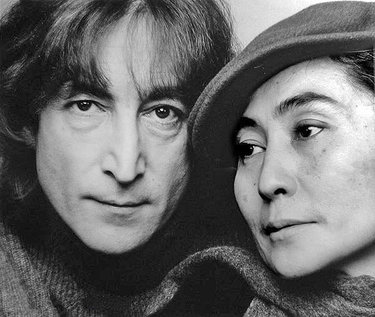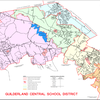Lennon's death taught cop on the scene "life is tenuous"
GUILDERLAND — One Guilderland resident will never forget the day John Lennon was shot — though it’s been 35 years this week — because he was there. He was one of the first responders to the scene.
Herb Frauenberger, a retired New York Police officer, said that, in 1980, he had been working for the New York Police Department for 16 years.
On Dec. 8, 1980, he was working a night shift, which began at 10 p.m. He and his partner, Tony Palma, had just gotten into their patrol car at 82nd Street and Columbus Avenue, when a call came in about shots fired at 72nd Street and Central Park West.
A unit assigned to that area responded that it would go to the scene and Frauenberger said he and Palma responded that they would provide backup. “There was absolutely no traffic, so we took off really fast, and more calls kept coming in, so we knew there was going to be something to this,” said Frauenberger.
One of the calls, he said, stated that the incident was at The Dakota, a cooperative apartment building.
“When we arrived at the scene, the other officers were just getting out of their car and approaching a male suspect who was lurking in the doorway,” said Frauenberger. “We heard someone, I think it was a doorman, yelling from the courtyard that someone had been shot in the back of the building.”
He and Palma ran to the back of the courtyard and the doorman was pointing inside to the vestibule.
“When we got inside, we saw a man lying facedown with his arms outstretched in a pool of blood,” said Frauenberger. “We approached and, when I saw the blood, I wasn’t even sure if he was still alive; there was a massive amount of blood.”
He said he turned the person’s head to see if he had a pulse, and he did, but it was faint.
“My partner was standing next to me, and I said to him, ‘I think this is John Lennon,’” said Frauenberger. “He thought I was wrong about that.”
The doorman confirmed that it was John Lennon and that he lived in the building.
A crowd had gathered over the course of the minute or two it took for he and Palma to assess the situation, and Frauenberger said he knew they had to get Lennon to the hospital quickly.
“One of the other units had called for an ambulance but it was eight minutes away and that wouldn’t work,” he said. “So, we took his legs and his arms and we carried him like a sack of potatoes to the police car outside.
“We really had no choice,” Frauenberger said. “It wasn’t something we would do under normal circumstances, but this wasn’t normal circumstances.”
Frauenberger’s patrol car was hemmed in, so they carried Lennon to a car that would be able to get out, and laid him facedown in the backseat.
“We told those officers to take him to the hospital and we would follow with Yoko,” he said, referring to Lennon’s wife, Yoko Ono.
They were headed to Roosevelt Hospital, only a short distance away, and radioed ahead to say a gunshot victim would be arriving, said Frauenberger.
“We were lucky there was no traffic and we got him there pretty quickly,” he said. “Yoko on the way down was upset and in shock and kept asking if he was going to live; we were trying to assure her he would be OK, even though I had my doubts, but what else can you do?
“We knew if we got him there fast enough he had half a chance.”
When they arrived at the hospital, said Frauenberger, Palma escorted Ono inside while he parked the car.
“When I got inside I didn’t know exactly where Lennon was, so they pointed out the room to me,” he said. “I opened the door and saw total pandemonium inside; there were four or five doctors and three nurses and one of the doctors had opened up his chest and was performing an open heart massage. It was pretty gruesome.”
Frauenberger said he told one of the nurses that he would wait outside the door in case he were needed.
“About two minutes later, the doctor who had been working on him came out and looked at me and he didn’t even have to say anything; I knew.” said Frauenberger. “He told me they couldn’t save him.”
The doctor then went to notify Ono, he said.
David Geffen, the record producer and a friend of Lennon, arrived at the hospital and said he would take Ono home, because their son, Sean, was there, and she did not want him to hear about his father’s death on the news.

“I escorted her out to the limousine and put her inside and off they went,” said Frauenberger. “Tony and I had to go into the station and clear up the paperwork, even though we still had no idea what had really happened.
“All we knew was there was one man at the scene who had been handcuffed and John Lennon was dead.”
Since they were still trying to figure out what had transpired, Frauenberger and Palma decided to go back to The Dakota.
“The newspaper reported that there were hundreds of people gathered there, but I am going to tell you it was thousands,” he said. “And this was in a matter of only two hours.”
Frauenberger said a man who worked for ABC News had been at the hospital waiting to be treated for a leg injury when Lennon was brought in. He called back to the news station and an announcement about Lennon’s death was broadcast in the middle of Monday Night Football.
“Millions of people heard about it in a matter of seconds,” said Frauenberger. “It was a pretty impressive sight, all those people in the street, quite honestly.”
They went back to the precinct, and still, he said, no one really understood what had happened.
“There were a million high-ranking police officers and probably 200 people from the press outside, and upstairs, they had Chapman doing an interview with a detective squad,” said Frauenberger, referring to Lennon’s killer, Mark David Chapman.
“That’s when we started to realize how bizarre this whole thing was; there really seemed to be no rhyme or reason,” he said. “He was just a little crazy.”
Frauenberger never spoke to Chapman, but said he observed him speaking to other officers.
“He was just sitting there conversing, like he had no emotional reaction,” he said. “It was weird to see a guy who had just killed somebody and was so matter-of-fact about it; he was so nonchalant.”
Frauenberger said that, when the arresting officers were taking Chapman into the station, he was apologizing for ruining their night.
“They were like, ‘Ruining our night? You just ruined your life and a bunch of other people’s lives,’” he said.
Later that night, said Frauenberger, he saw a copy of J. D. Salinger’s “Catcher in the Rye” sitting forgotten on a desk at the precinct, and he took it and brought it the next day to be logged as evidence.
“Apparently Chapman had brought the book with him to read after he murdered Lennon,” he said.
During legal proceedings, Chapman said the book was his statement, and he wrote, “This is my statement,” inside the novel, saying the big part of him was Holden Caufield, the main character, and the small part of him was the Devil.
“He just looked like a normal, everyday guy,” marveled Frauenberger.
Chapman pleaded guilty to the murder and was sentenced to 20 years to life in prison.
“That means you have to serve at least 20 years and then each year after that you can submit for parole,” said Frauenberger. “But he’ll never get out; he’s not going anywhere.”
Frauenberger said he will never forget the details of that night.
“I remember it so well,” he said. “I don’t dwell on it, but it’s not something I can wipe out of my mind.”
Frauenberger retired as a police officer four years after Lennon’s murder and moved to Cherry Valley, just outside of Cooperstown, where he lived what he called a “country life” for a number of years.
He moved to Guilderland after meeting his girlfriend.
“I still think about it often,” he said, of Lennon’s death. “I mean, when does a day go by that you don’t hear a Beatles song?
“Sometimes I read accounts of it and I think, ‘Was I really there?’ There are a lot of inaccuracies and the only way you really know what happened was if you were there,” he continued.
He said it did make him think about life differently.
“John Lennon is the last guy you would have expected to be killed because was he a pacifist,” said Frauenberger. “It just goes to show you that life is tenuous.”



